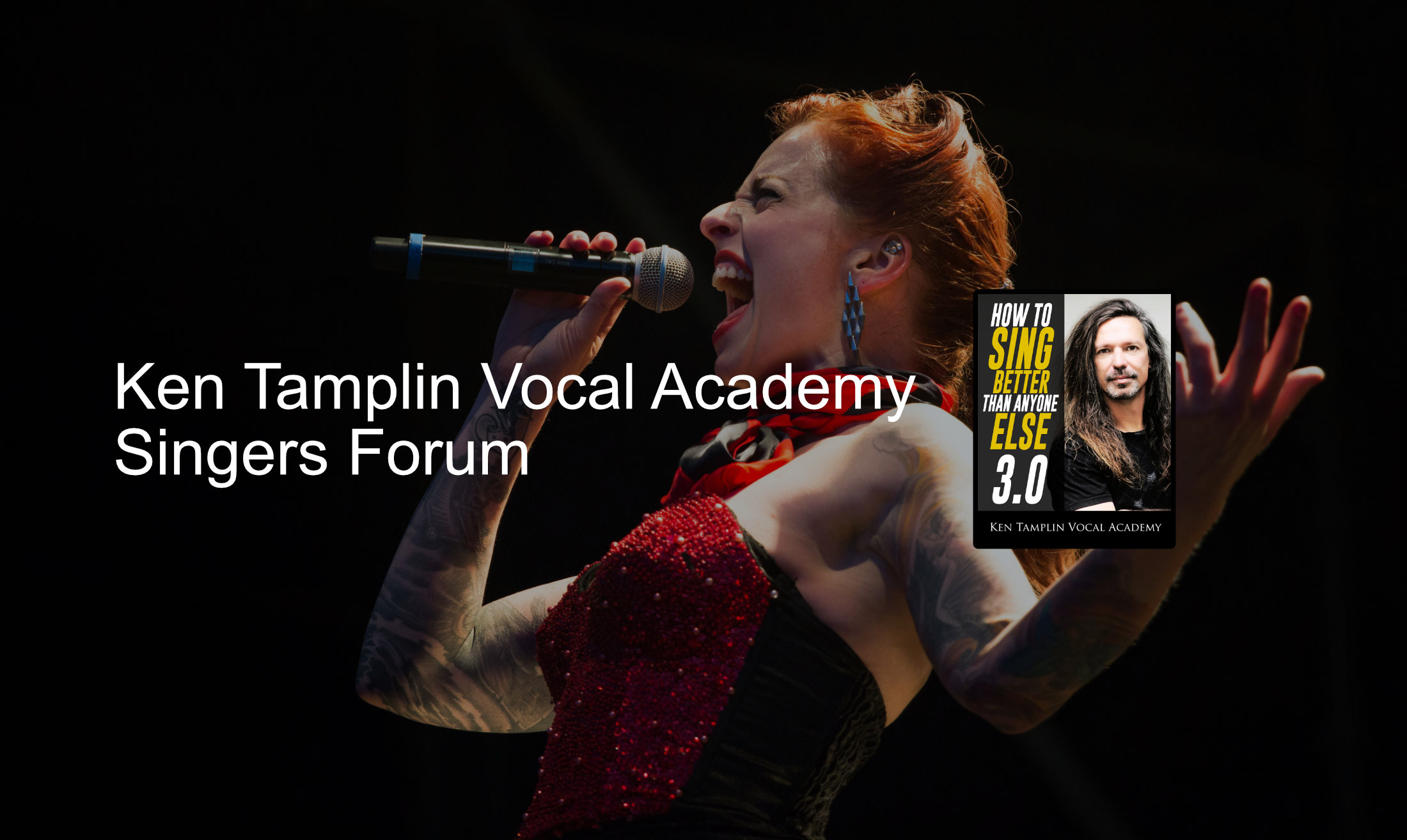Options
Nerd alert - research into vocal range increases
 DrHypno
Member Posts: 13
DrHypno
Member Posts: 13
Hi guys
I have an extensive background in exercise science and kinesiology, as such I’m applying some of my ideas to vocal range.
Long ago I discovered a hack or gimmick that made my vocal range at least an octave higher it is now, but I forgot how I did it.
I’ve been asking around the Internet to various teachers and they essentially say - yes we know what it is, we’re not going to talk to you about it because it’s going to damage your voice.
That’s completely valid and fair!
And so I’m reverse engineering what I used to do.
If you take the vocal cord folds, that surround the vocal tendons, we can make a few assumptions:
Our pitch goes up as a vocal folds tighten.
Of course enough air is required to vibrate them, and they must be supple and soft enough at the edges to vibrate.
Thicker vocal folds will take more air mass because they weigh more they have a lower base frequency.
But, slamming through more air mass behind the vocal dam can cause Vibration damage.
But imagine if you will - you took these two ligaments that are covered with soft tissue , put them between two points and you stretch them tighter and tighter with enough air behind them, you could make it extremely loud wolf whistle.
(But shred them, alas)
So the limit to vocal range is not really mechanical, realistically, it’s actually neurological.
When we train our voice, what we were doing is something in kinesiology called disinhibition.
Golgi tendon organs sense a degree of unfamiliar stretch, and cause muscle spindles to fire up (via the vagus nerve)
And prevent us from applying more stretch.
GTOs sense muscular tension within muscles when they contract or are stretched. When the GTO is activated during contraction, it causes inhibition of the contraction (autogenic inhibition), which is an automatic reflex. When the GTO is activated during stretching, it inhibits muscle spindle activity within the working muscle (agonist) so a deeper stretch can be achieved. GTOs are sensitive to changes in tension and rate of tension and, because they are located in the musculotendinous junctions, they are responsible for sending information to the brain as soon as they sense an overload. Static stretching is one example of how muscle tension signals a GTO response. So, when you hold a low-force stretch for more than seven seconds, the increase in muscle tension activates the GTO, which temporarily inhibits muscle spindle activity (thus reducing tension in the muscle), and allows for further stretching. (ACE)
So now that I understand this, I am going to apply kinesiology science to expanding my vocal range. note that all of the classic exercises that we’ve been taught do this indirectly, without a deep dive into exercise science, I’m going to go for it directly and see what happens.
Thoughts?
I have an extensive background in exercise science and kinesiology, as such I’m applying some of my ideas to vocal range.
Long ago I discovered a hack or gimmick that made my vocal range at least an octave higher it is now, but I forgot how I did it.
I’ve been asking around the Internet to various teachers and they essentially say - yes we know what it is, we’re not going to talk to you about it because it’s going to damage your voice.
That’s completely valid and fair!
And so I’m reverse engineering what I used to do.
If you take the vocal cord folds, that surround the vocal tendons, we can make a few assumptions:
Our pitch goes up as a vocal folds tighten.
Of course enough air is required to vibrate them, and they must be supple and soft enough at the edges to vibrate.
Thicker vocal folds will take more air mass because they weigh more they have a lower base frequency.
But, slamming through more air mass behind the vocal dam can cause Vibration damage.
But imagine if you will - you took these two ligaments that are covered with soft tissue , put them between two points and you stretch them tighter and tighter with enough air behind them, you could make it extremely loud wolf whistle.
(But shred them, alas)
So the limit to vocal range is not really mechanical, realistically, it’s actually neurological.
When we train our voice, what we were doing is something in kinesiology called disinhibition.
Golgi tendon organs sense a degree of unfamiliar stretch, and cause muscle spindles to fire up (via the vagus nerve)
And prevent us from applying more stretch.
GTOs sense muscular tension within muscles when they contract or are stretched. When the GTO is activated during contraction, it causes inhibition of the contraction (autogenic inhibition), which is an automatic reflex. When the GTO is activated during stretching, it inhibits muscle spindle activity within the working muscle (agonist) so a deeper stretch can be achieved. GTOs are sensitive to changes in tension and rate of tension and, because they are located in the musculotendinous junctions, they are responsible for sending information to the brain as soon as they sense an overload. Static stretching is one example of how muscle tension signals a GTO response. So, when you hold a low-force stretch for more than seven seconds, the increase in muscle tension activates the GTO, which temporarily inhibits muscle spindle activity (thus reducing tension in the muscle), and allows for further stretching. (ACE)
So now that I understand this, I am going to apply kinesiology science to expanding my vocal range. note that all of the classic exercises that we’ve been taught do this indirectly, without a deep dive into exercise science, I’m going to go for it directly and see what happens.
Thoughts?


Comments
i find this really interesting and would like to try it too.
You are going for such an in-depth knowledge it's great
Well as far as I know from Ken's learning as regard to range
It revolve around air management and vocal modification (maintaing the brightness)
Well as you go high you need less air and the shift of vowels like law loft book hook ..........
And then managing the tension
So it's what I following for range
You were talking about a hack if you can record any thing you remember regarding it I may help